#astrobackyard
Video
youtube
How I Captured the International Space Station From My Own Balcony
0 notes
Text
₍。☆, Ocs/cool world building〝⁾
☆ Humanoid stars ☆
(This is pretty long so be warned. Also, mentions of death and starving near the end)
The star’s have limbs made out of ornately designed and bent metal, helping identify what classification they fall into. Depending on the classification, the star’s limbs will be made up of different materials, and may have different materials embedded within them, depending on if the star had stolen mass from another.
O; zinc/cobalt
B; gray iron/zinc/cobalt
A; iron/gray iron/zinc/cobalt
F; silver/polished iron
G; white gold/gold
K; copper
M; black iron/cast iron
Denser objects, such as black holes, are in an entirely different classification. They have a relatively large amount of variability, though most keep to a few kinds. Really anything could happen however. There have even been documented cases of dense objects with diamond limbs.
Supermassive bh; tungsten
Regular bh; black iron, or (rarely) tungsten
Neutron; polished iron/white gold, or (rarely) zirconium/platinum
Dwarfs; white gold/silver/cadmium, or (rarely) platinum
Sometimes, there will be cases that a star's limbs are a mix of two, or more, kinds of material. These stars are exceptionally rare, due to the fact that the mutation often happens in larger, O and B type stars. Even rarer, is if this mutation happens to dense objects, as these objects in themselves are very rare, adding onto the extreme rarity of the mutation. This can also happen if the object is dense enough to steal material from others, which is also very rare.
Stars in binary systems will usually have their limbs end up as a mix of both of the different materials. Sometimes, if the binary system includes a dense object, like a neutron star, then the larger and less dense object will have very thin metal designs, with very little left, while the denser object has the former's material laced into their limbs.
Stars in binary systems are akin to romantic relationships that humans have. Depending on how close the stars are to each other, the relationship will vary. If they are relatively far from each other, they will most likely only be friends, but if they are very close to each other, there's a very high chance they are married, or in a serious romantic relationship with each other.
Near the end of the star's life, the ornate metal designs will creep up the rest of their body, until they are completely unable to move, and they either starve to death, or the metal over takes them. The dead star will start to disintegrate, turning into a cloud of colourful smoke up until there’s nothing left of the star.
#my ocs#ocs#humanoid stars#i have actual guys based off this#i might post about them#also#the star classification stuff#if you dont really understand that#i suggest looking up 'types of stars'#go to the site that pops up from astrobackyard#thats really helpful
0 notes
Text

The Milky Way Core © AstroBackyard
#space#astrophotography#solar system#planet#stars#galaxy#universe#nasa#night sky#milky way#cosmos#astronomy
710 notes
·
View notes
Text
My Photo of the Iris Nebula
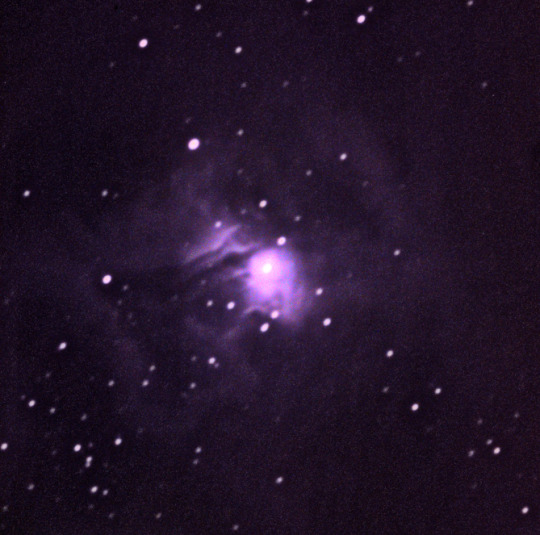
Attached is a photo of the "Iris Nebula" that I colorized and enhanced.
This was the first photo that I attempted to colorize and enhance after my "Crab Nebula" one. This attempt was much more successful than my "Crab Nebula" one, due to the fact that I had practiced colorizing and editing on the last photo. It also was brighter than the Crab Nebula to begin with, so I didn't need to focus on stretching up the "Levels" and "Curves" as heavily as I did in the Crab Nebula photo.
Located about 1,300 light-years away, the Iris Nebula (also referred to as "NGC 7023") is located in the 'Cepheus' Constellation, and belongs in the class of Nebula known as a "Reflection". Other well-known 'Reflection Nebulas" are named the "Blue Horsehead Nebula", and the "Running Man Nebula" which is located in the Orion Constellation. The Iris Nebula is also about six light years (35.28 trillion miles) long!
With the help of the BSU Observatory and Professor Kern, I was able to get a clear picture of the Iris Nebula. The original picture did not show much, all I could see was the faint center, which was visible (unlike the Crab Nebula). Once I increased the luminance level and changed the "Curves" and "Levels" tools around slightly, I was able to get a view of the stars and dust clouds surrounding the center of it, that photo is shown below this paragraph.
(This photo was after increasing the "Levels" and "Curves" on the photo, NOT the luminance layer)
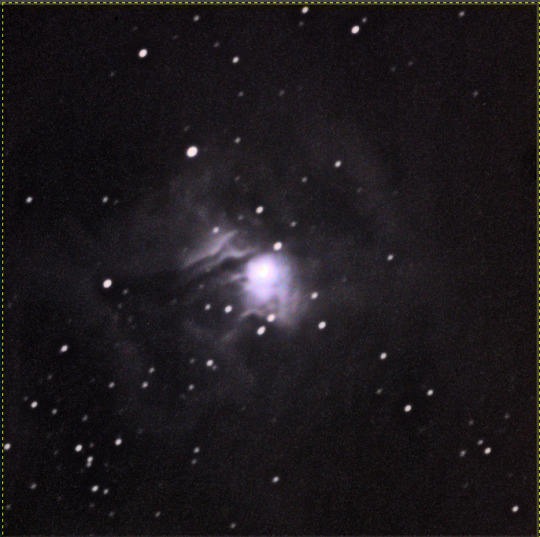
You may look at the first photo and notice that the color of it is primarily purple- in fact- its ALL purple. The reason behind this is that prior to increasing the "red" layer's intensity, it was not clear enough for my liking, the dust clouds in the photo were being muted out by the "blue" layer. In order for the clouds to appear prominently, I had to add to the "red" layer's intensity, and it worked, the downside is that it made everything purple.
Below is an photo taken by Trevor Jones, which shows the Iris Nebula being shown as blue, unfortunately, my photo was only clear when I made it look purple.
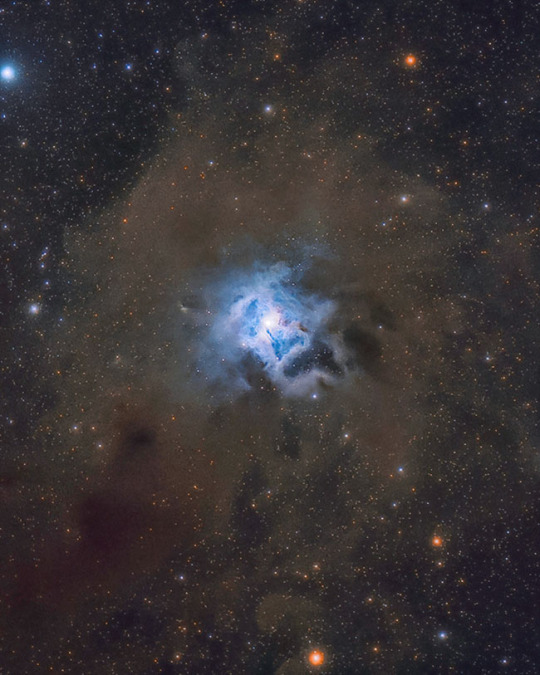
What gives off it's iconic blue glow is the star that is located inside the Nebula, it is known as "SAO 19158". The reason that it is blue is because of the temperature of the star, which falls between 10-50,000 Kelvin. The star is about ten to fifteen times the mass of our sun, and illuminates the dust clouds surrounding it, which gives us the jaw-dropping beauty of the "Iris Nebula"
SOURCES:
"Stars | Causes of Color" (Webexhibits)
"Iris Nebula" (StarryWonders)
"The Iris Nebula" (AstroBackyard)
"iris Nebula" (Wikipedia)
Photo Credits:
BSU Observatory
Trevor Jones
NASA
19 notes
·
View notes
Text
I love when the community of a (relatively) niche new hobby I get into has like, a staple Thing they all use. "Oh you're new to birdwatching? You've downloaded Merlin righ- ah yes good". "So what camera are you buying for astrophotography?... As yes good choice. You've been reading astrobackyard haven't you"
9 notes
·
View notes
Text
Flying to the Nebulas in orion #m78 #IC434 with my #redcat71 and my #asi6200MC #astrophotography #orionbelt from my backyard fullframe
#astrophotography #astrophoto #astrofotografia #telescope #astrobackyard #space #astronomy #stars #deepsky #astroaddicted #univers #stargazing #sky #astronomyphotography #deepspace
2 notes
·
View notes
Video
The Sombrero Galaxy (M104) par AstroBackyard
Via Flickr :
#galaxy#space#stars#stargazing#astrophotography#telescope#outdoors#vast#colorful#science#wonder#astronomy#camera#filter#CCD#flickr
0 notes
Text

Unbelievable Taurid fireball captured on the East coast during totality!! 😃 😳🌟🤩
After hiking with my gear for a mile in the dark, up a mountain to get to the highest place i could think of, I was capturing the eclipse and was truly dumbstruck when this bright fireball bombed my photo!!!
I've always looked in awe at other images of meteors and fireballs but they've always eluded my capture... I suppose everyone deserves to catch a break once in a while...
I'm extremely grateful for this image and everything that the night offered..
I also watched the ISS, (International Space Station) slowly pass overhead shortly before totality
Truly one in a million and I still can't believe it!! 💥 💥 💥
Modified Canon 80d, ir cut filter, rokinon 135, 2.5s, iso200
#astronomyphotography #fivestarspacefacts #tauridmeteorshower #bloodmoon #lunarphotography #lunareclipse2022 #taurids #wvastronomy #oneinamillion #astrophotography #astronomynerd #canon #patiencepaysoff #nasa #apod #highpointscientific #astrobackyard #witns
Credit: Johnathan Eggleston
0 notes
Photo

Cocoon Nebula - IC 5146 Located in Cygnus, the IC 5146 is a reflection and emission nebula. I finally decided to put everything together on the Celestron EdgeHD 8 for deep space and do some testing to make sure my guiding worked and that I could reach focus. Guiding was the easy part, focus was the pain. I finally got it and on the first night I captured m27 amd NGC 869, those I will post soon. On night two, I decided to shoot the Cocoon on both my Edge as well as my Meade 80mm Triplet. This here is from the Edge, and though I had some focus drift in the middle of my imaging (can't seem to get the auto focus to do its thing when using my Canon), I am happy with the result, especially considering I did not use any filters. . Full resolution and details at Astrobin, link in Bio or here: https://www.astrobin.com/k22kkd/B/ . 274 x 60s 400 ISO Dark, flat, bias and dark flats used for calibration Providence, RI - Bortle 8 . @celestronuniverse Edge HD 8 Celestron 0.7 Reducer @canonusa EOS Ra Sky Watcher EQ6-R Pro Svbony 60mm Guide Scope (guide) ZWO asi290mm-mini (guide) Pegasus Powerbox Advanced . Captured using Astro Photography Tool, stacked in DeepSkyStacker, Pixinisight used for crop, color calibration, background extraction, star removal and Canon banding removal. Processing finished in Photoshop . @provjournal . . #astrophotography #astrophoto #phototography #astronomy #highpointscientific #OPTeam #myOPTgear #agenaastro #astromaniacmag #astrobackyard #backyardastronomy #cocoonnebula #Cygnus #ic5146 #darknebula #igworldclub_astrophotography #ig_spaceimage #ig_astrophotography #celestron #edgehd8 #canonphotography #ShotOnCanon #space #milkway #nebula #rhodeisland #canoneosra #apod #photo #nightphotography (at Providence, Rhode Island) https://www.instagram.com/p/Cim8KwIuPJ6/?igshid=NGJjMDIxMWI=
#astrophotography#astrophoto#phototography#astronomy#highpointscientific#opteam#myoptgear#agenaastro#astromaniacmag#astrobackyard#backyardastronomy#cocoonnebula#cygnus#ic5146#darknebula#igworldclub_astrophotography#ig_spaceimage#ig_astrophotography#celestron#edgehd8#canonphotography#shotoncanon#space#milkway#nebula#rhodeisland#canoneosra#apod#photo#nightphotography
11 notes
·
View notes
Photo

This is my last posting for the comet 2020 F3 NEOWISE
This has been a great target. You will still be able to see the comet through the rest of the month, but it will begin to fade quickly. It will not return for another 6800+ years, so this is truly a once in a lifetime visible experience. Dont miss it. If you look closely right above the tail in a different angle you can see the Ion trail. The ion trail is a strait line and points directly away from the sun. The tail of the comet is affected by the solar wind and actually is comprised of dust particles and thus has mass and behaves differently.
Captured in central #texas
#drippingsprings
#austin
#austintexas
#atx
#neowise #neowisecomet #comet #space #astrophotography #astronomy #astrobackyard I am tagging you because you motivated me to do this. #photography #canonphotography #photooftheday #photo #night #nightphotography
https://www.instagram.com/p/CC2boG6JDkq/?igshid=kp8wzuoibrjy
#texas#drippingsprings#austin#austintexas#atx#neowise#neowisecomet#comet#space#astrophotography#astronomy#astrobackyard#photography#canonphotography#photooftheday#photo#night#nightphotography
32 notes
·
View notes
Video
youtube
Deep Sky Astrophotography Walkthrough
In this video, I'll break down everything you need for deep sky astrophotography with a telescope. I'll cover each piece of gear, and explain how it can be used to capture beautiful deep-sky images of space from your backyard.
Deep-sky astrophotography is a rewarding and fulfilling hobby, especially once you're able to achieve impressive results from your own home. This video aims to give beginners a better idea of what you need, and what you can expect to accomplish yourself.
35 notes
·
View notes
Photo
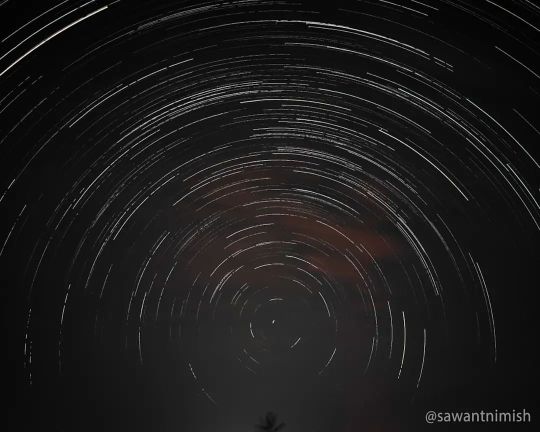
A star trail is a type of photograph that uses long exposure times to capture diurnal circles, the apparent motion of stars in the night sky due to Earth's rotation. . 🌚 Total darkness is your friend for this very long exposure photography. 🤩 😀 STARTRAIL 🌠 . 📸 By - @sawantnimish Shot on - redmi note 9pro max. . Thanks for guidance - @silent_trekker . _____________________________________________ @xiaomi.redmi.india @redmiindia @manukumarjain #Star #Stars #StarGaze #StarGazing #StarMap #Startrail #Startrails #StartrailChasers #StartrailsPhotography #StartrailPhotography #Astrophotography #shotonredmi #shotonxiaomi #polaris #longexposure #astrophotography #nightphotography #astrobackyard #milkyway #nightsky #startrail #startrailsphotography #astrophoto #nightscape #startrailchasers #nature #landscape #startrailphotography #starphotography #photooftheday (at Vita, Maharashtra) https://www.instagram.com/p/Casnj7wNuM0/?utm_medium=tumblr
#star#stars#stargaze#stargazing#starmap#startrail#startrails#startrailchasers#startrailsphotography#startrailphotography#astrophotography#shotonredmi#shotonxiaomi#polaris#longexposure#nightphotography#astrobackyard#milkyway#nightsky#astrophoto#nightscape#nature#landscape#starphotography#photooftheday
0 notes
Photo

Posted @withregram • @zoliroastro The best comet of 2021 is here! C/2021 A1 (Leonard) aka Comet Leonard, is blazing through the night sky right now. You should be able to see it with binoculars and maybe even with just your eyes in the next couple weeks. Look for it in the early morning before sunrise to the east not too far from the star, Arcturus. I took 220 images at 30 seconds each with my Hyperstar telescope setup on November 30. At this point, Comet Leonard was in the middle of a galaxy field, so if you look closely, you might be able to see several galaxies as fuzzy spots. I’m not gonna lie...this shot was really difficult to process because 1) This is only my second time imaging a comet and 2) I had a hard time getting rid of the star streaks when stacking the comet master frame in Pixinsight. But it all worked out and I’m happy with the shot! Have you seen or photographed Comet Leonard yet? ⭐️🔭 Celestron 9.25” SCT EQ6-R Pro ASI533mc ZWO 30mm guidescope with ASI224mc Starizona Hyperstar v3 ASIair Pro #galaxies #skyatnight #asiairpro #spacetime #photostacking #astrophotograph #oklahoma #starrynight #lightspacetime #photoshop2021 #ourstar #astrobackyard #starrynights #spacetravel #beamazed #celestronuniverse #astronomyart #astronomypictureoftheday #astroaddict #nightskyphoto #beginnerastrophotography #yesesa #astronomypicturesdaily #cometleonard #cometphotos #exploringouruniverse https://www.instagram.com/p/CXBzyRPLRu5/?utm_medium=tumblr
#galaxies#skyatnight#asiairpro#spacetime#photostacking#astrophotograph#oklahoma#starrynight#lightspacetime#photoshop2021#ourstar#astrobackyard#starrynights#spacetravel#beamazed#celestronuniverse#astronomyart#astronomypictureoftheday#astroaddict#nightskyphoto#beginnerastrophotography#yesesa#astronomypicturesdaily#cometleonard#cometphotos#exploringouruniverse
0 notes
Photo
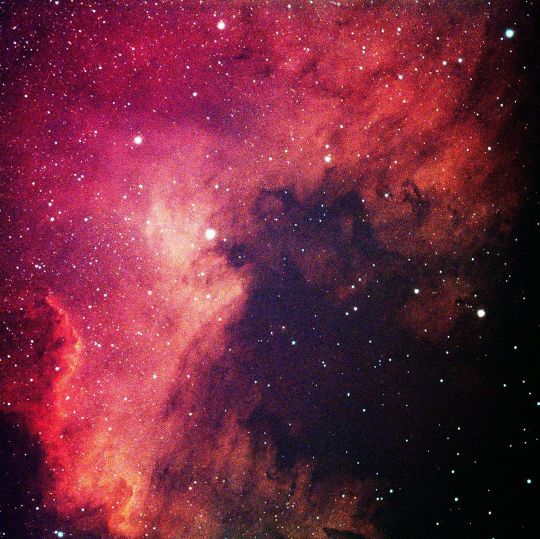
THE NORTH AMERICA NEBULA. Constellation Cygnus, close to Deneb. Distance from us: 2,202 light years. I know this nebula is big for my setup, but I still wanted a piece of It. This is a great target right now because it is not far away from the North Celestial Pole and makes it easy to track! This is a 2 hours and 45 minutes total exposure. I hope you’ll enjoy it as much as I do! #telescope #astrobackyard #skywatcher #amateurphotography #space #longexposure #amateurphotographer #zwoasi #astrophotography #astropics #astronomy #stars #explorescientific #skywatchereq6rpro #stargazer #starchaser #skyphotography #nightimages #nightskyphotography #cosmos #science #amazingskyview #longexposureshot #bortle9 #highpointscientific #universetoday #zwoimageoftheday #ngc7000 #learning (at Los Angeles, California) https://www.instagram.com/p/CCoa9H7pSb1/?igshid=88tmvlacr442
#telescope#astrobackyard#skywatcher#amateurphotography#space#longexposure#amateurphotographer#zwoasi#astrophotography#astropics#astronomy#stars#explorescientific#skywatchereq6rpro#stargazer#starchaser#skyphotography#nightimages#nightskyphotography#cosmos#science#amazingskyview#longexposureshot#bortle9#highpointscientific#universetoday#zwoimageoftheday#ngc7000#learning
0 notes
Photo

Габрово ❤️ и Neowise ☄ #cometneowise #comet #nightphotography #astrophotography #nightscaper #stargazing #nightimages #starrynight #nightphotography_exclusive #milkywaychasers #universe #deepsky #universetoday #astrobackyard #interstellar #cityscapes #longexpoelite #longexposure #bulgaria #visitbulgaria #gabrovo #Габрово #neowise #neowisecomet #neowisec2020f3 https://www.instagram.com/p/CCqBaILnbDZ/?igshid=isepnpcodl7
#cometneowise#comet#nightphotography#astrophotography#nightscaper#stargazing#nightimages#starrynight#nightphotography_exclusive#milkywaychasers#universe#deepsky#universetoday#astrobackyard#interstellar#cityscapes#longexpoelite#longexposure#bulgaria#visitbulgaria#gabrovo#габрово#neowise#neowisecomet#neowisec2020f3
0 notes

